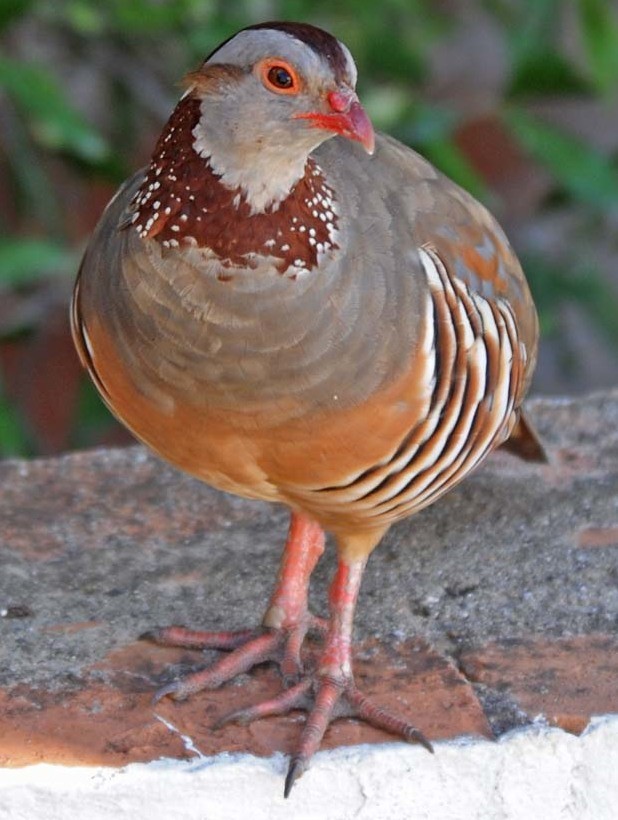Barbary Partridge
A species of Rock partridges Scientific name : Alectoris barbara Genus : Rock partridges
Barbary Partridge, A species of Rock partridges
Botanical name: Alectoris barbara
Genus: Rock partridges
Content
Description General Info
 Photo By AquilaGib , used under CC-BY-SA-3.0 /Cropped and compressed from original
Photo By AquilaGib , used under CC-BY-SA-3.0 /Cropped and compressed from original Description
The Barbary partridge is a rotund bird, with a grey-brown back, grey breast and buff belly. The face is light grey with a broad reddish-brown gorget. It has rufous-streaked white flanks and red legs. When disturbed, it prefers to run rather than fly, but if necessary it flies a short distance on rounded wings. It is closely related to its western European equivalent, the red-legged partridge. It is similar to the red-legged partridge, but it has a different head and neck pattern. The song is a noisy tre-tre-tre-tre-tre-cheeche-tre-tre-tre. 
Size
38 cm
Nest Placement
Ground
Feeding Habits
Barbary Partridge consumes a diverse diet of leaves, shoots, fruits, seeds, and insects, with ants and locusts as supplements. Up to one-third of its diet includes vegetation like Salsola and Euphorbia for moisture. Young barbary Partridge mainly eat ants. In groups of up to 30, they forage together outside the breeding season.
Habitat
Barbary Partridge typically resides in rocky terrains and arid hillsides. They favor shrubby and wooded areas, including pine forests and woodlands composed of Argania spinosa. Their habitat also encompasses semi-desert steppes, dry riverbeds lined with shrubbery, and agricultural landscapes such as croplands and groves of palm, citrus, and olive. Additionally, barbary Partridge can be found in habitats with various types of vegetation like Eucalyptus and Euphorbia. Where sympatric with related species, barbary Partridge occupies distinct habitats in their absence.
Dite type
Granivorous
General Info
Feeding Habits
Bird food type
Distribution Area
The Barbary partridge has its main native range in North Africa, and is also native to Gibraltar and the Canary Islands (Alectoris barbara ssp. koenigi). It has been introduced to continental Portugal and Madeira, though there are no recent records of this species on the latter islands. It is also present in Sardinia. 
Species Status
Not globally threatened.